Effective Strategies for Managing Clothes Moth Infestations
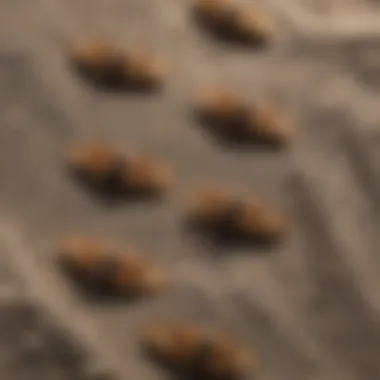
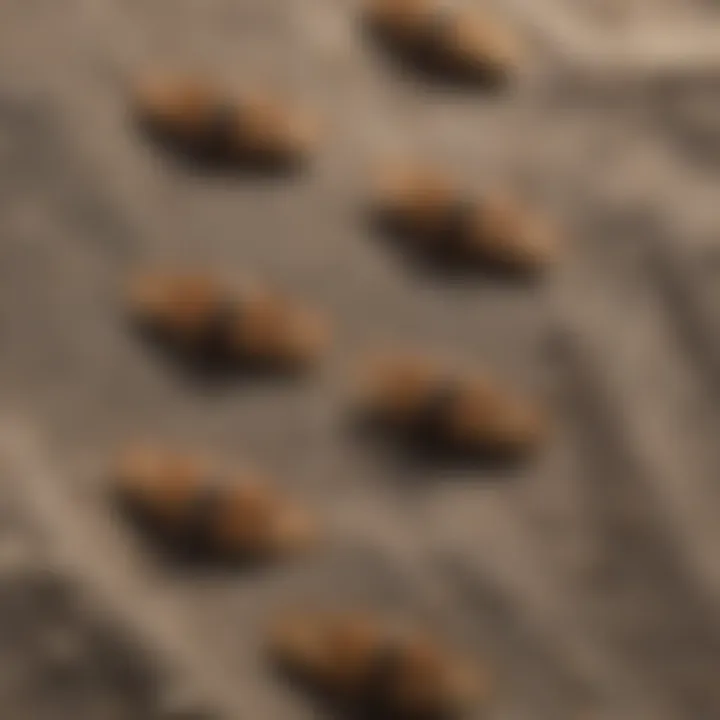
Intro
In the battle against clothes moth infestations, knowledge truly is power. These tiny pests, though often overlooked, can wreak havoc on your cherished garments. From wool sweaters to silk blouses, clothes moths have a knack for turning your closet into their personal buffet. This article aims to arm homeowners and housewives alike with the strategies necessary to tackle these unwelcome intruders through effective preventive measures and smart pest control methods.
Understanding the enemy is crucial, so we’ll delve first into Preventive Pest Control Strategies. After all, an ounce of prevention beats a pound of cure, especially when it comes to protecting your belongings.
Preventive Pest Control Strategies
When it comes to managing pests like clothes moths, taking proactive steps can save you both time and money in the long run. Here’s how you can shield your home from these fabric-feasting pests.
House Exterior Protection
The perimeters of your home are your first line of defense. Sealing entry points and maintaining a clean exterior can help keep those moths at bay.
- Tips for sealing cracks: Check around windows, doors, and foundation. Use caulk or weather stripping to patch any gaps.
- Clearing debris: Don’t allow clutter to build up outside; it provides hiding places for pests.
- Preventing pests from entering: Maintain a well-kept garden and ensure that vegetation doesn’t touch the walls of your home.
Yard Maintenance
An approachable yard isn’t just more enjoyable; it can also deter pests.
- Essential yard care routines: Regular mowing keeps grass short and less inviting to pests.
- Methods for keeping yard pest-free: Planting native flowers and plants can attract beneficial insects that prey on moths and other pests.
Indoor Cleanliness
Cleanliness is key if you want to keep those pesky moths away from your fabrics.
- Expert cleaning tips and techniques: Regularly vacuum rugs, carpets, and upholstered furniture. Pay special attention to corners and under furniture; moth larvae love to hide!
- Maintaining a pest-resistant indoor environment: Store off-season clothes in airtight containers to deter moths from making your closet their home.
Garbage Disposal
Garbage can be a surprising source of food for pests, including moths.
- Efficient waste disposal methods: Use tightly sealed bins to prevent any smells from attracting unwanted guests.
- Importance of proper garbage disposal: Regularly empty your bins and keep your recycling clean; food residue can lure pests.
Other Pest Prevention Strategies
Beyond these basics, consider broadening your approach with innovative methods to protect your home.
- Keep pheromone traps in closets, which can help to catch male moths before they find your clothes.
- Rotate your closets seasonally. Reorganizing and cleaning often might just be the key to thwarting infestations.
"A stitch in time saves nine."
Being vigilant about potential risk factors is wise. Now that you’ve fortified your home against intrusions, identifying potential problem areas within your property is next.
Identifying Pest Risk Areas
When it comes to stopping moths in their tracks, recognizing where they’re likely to strike can make all the difference.
Moisture Prone Areas Inspection
Clothes moths thrive in damp environments. It's worth your time to identify trouble spots.
- Identifying damp conditions: Inspect basements, kitchens, and bathrooms for leaks or humidity.
- Tips for preventing infestations: Invest in dehumidifiers for moisture-laden areas to keep things dry and inhospitable.
Crack and Crevice Inspection Guide
Clothes moths are expert hiders. Inspecting your home for entry points is vital.
- Importance of inspecting access points: Regular checks around doors, windows, and baseboards ensure that there are no gaps left unsealed.
- Strategies for sealing cracks and crevices: Use foam or caulk to fill cracks; this can cut off moth access significantly.
Greenery Inspection for Pest Risks
Your yard may hold hidden dangers.
- Understanding greenery's impact on pests: Overgrown or unkempt gardens can harbor pests like moths.
- Guidelines to maintain pest-free yards: Regularly trim back hedges and shrubs, and avoid dense foliage that can serve as a hiding spot.
Additional Pest Risk Areas
Besides the common trouble zones, don’t overlook the less obvious culprits that could attract pests.
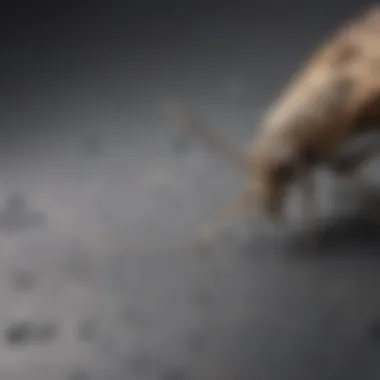
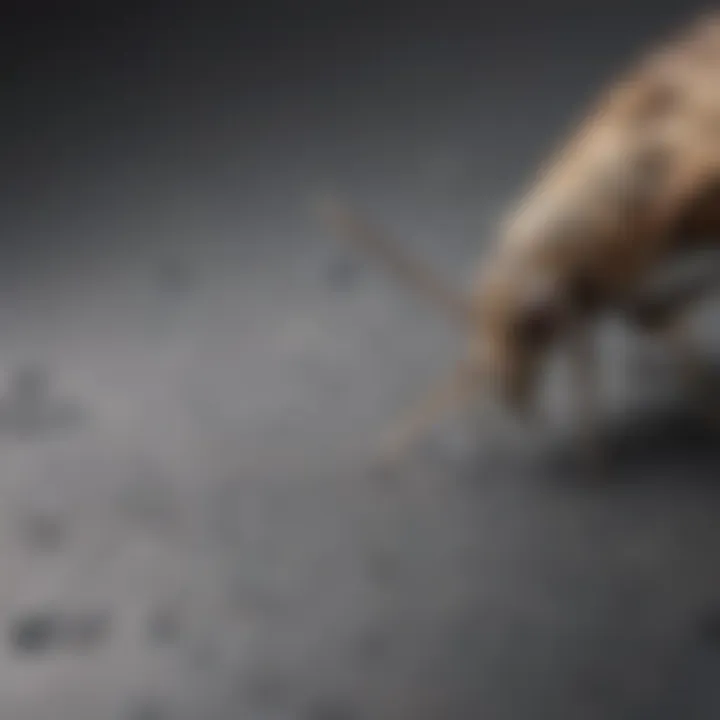
- Inspect under furniture and behind appliances in your home, as these are often neglected areas that can become breeding grounds for pests.
- Pay attention to items in storage; old boxes and clothing can unknowingly harbor the eggs of clothes moths.
With preventive strategies and risk identification in place, it's time to move on to effective pest control methods, where we’ll examine hands-on techniques and identify products that can help keep those pesky moths at bay.
Understanding Clothes Moths
Gaining insight into clothes moths is not merely an academic exercise; it is the bedrock of successful pest management. Without recognizing their habits and life cycle, any attempt at control would likely be futile, leading to frustration as these pests continue their unwelcome intrusion. Understanding these little critters enlightens homeowners about the most effective methods for eradication and prevention, making it a pertinent focus of this article.
What Are Clothes Moths?
Clothes moths are often mistaken for other types of moths, which is a mistake many homeowners make. Most commonly, it's the Tineola bisselliella, also known as the webbing clothes moth, that invades our wardrobes and causes the most damage. Their larvae thrive in environments rich with wool, silk, and even synthetic fibers. Indeed, these moths feast on clothing, upholstery, and even stored textiles. Understanding what they are, coupled with effective strategies for managing their presence, can save you a lot of heartache and cost down the line.
"An ounce of prevention is worth a pound of cure." — Benjamin Franklin
The Dual Challenges
The challenges posed by clothes moths come in two significant dimensions: awareness and action. Recognizing the signs of an infestation is often the first hurdle. Moth eggs are nearly invisible, and the first thing you might notice is damage to your favorite garments. By equipping yourself with knowledge about their lifecycle and behavioral patterns, you're putting yourself one step ahead in the battle against these intruding pests.
In essence, educating oneself about clothes moths is key to fortifying your home against potential invasions. It fosters a proactive attitude towards pest management, preventing extensive damage before it can occur.
Signs of Infestation
Recognizing signs of a clothes moth infestation can save significant aggravation and resources down the line. After all, catching the problem early makes dealing with it a whole lot simpler. To tackle clothes moths effectively, it's vital to understand their indicators. These signs range from visible damage on fabrics to subtle traces that could easily go unnoticed.
Physical Evidence of Moths
Identifying physical evidence of moths is the first step in acknowledging you have a problem. Here are a few telltale signs:
- Moth Larvae: One of the most significant indicators of an infestation is the larvae themselves. You might notice small, caterpillar-like creatures crawling on or near your clothing or in storage areas. They are often pale-colored and can be anywhere from a few millimeters to an inch long.
- Silken Webs: Look for fine webs or silk-like threads on your garments, especially in dark or less-frequented areas. Moths weave these webs to create a safe space for their larvae. If you come across any, it’s a strong hint you have a moth problem.
- Frass: This is a fancy term for moth droppings, which resemble small, dark grains. Finding frass amid your clothes or closets is a sign that moth larvae are nearby, feeding away at your precious fabrics.
The earlier you spot these signs, the easier it is to control the situation. It’s like nipping a bud in the bloom rather than waiting for it to flower.
Damage Assessment
Once you identify physical evidence of moths, assessing the damage is next. It's essential to determine the extent of the infestation and what types of fabrics and items have been affected. Here are a few things to consider:
- Types of Fabrics: Some materials are more susceptible to moth damage than others. Wool, silk, and certain types of cotton are favored snacks for these pests. Inspect your wardrobe carefully, particularly items tucked away or stored for seasonal use.
- Extent of Damage: Check the condition of your clothing, especially high-value items like winter coats or fine linens. Holes that look like they’ve been made by a tiny punch are typical in clothes moth situations. Evaluate if the damage can be repaired or if the garments should be permanently retired.
- Assess Frequency of Use: Items that aren’t frequently used are often the first to become infested. Pay attention to boxes and bins in your storage areas. Materials that have been hanging around for a while are prime targets for moths.
Important Note: Even if you find only a few signs, do not underestimate the situation. Moths reproduce rapidly, and things can escalate out of control if you wait too long to take action.
Understanding the signs of infestation and accurately assessing the damage can significantly influence your next steps in treating the problem. With the right approach, you can reclaim your clothing and ensure your home remains moth-free.
Insecticides for Moth Control
Managing clothes moth infestations often pivots on the use of insecticides, making it a crucial focus for homeowners dealing with these pests. Understanding the types of insecticides available, their application methods, and their expected outcomes not only helps in combating moths but also aids in fostering a more sustainable household environment.
When you discover the telltale signs of moth activity, reaching for insecticides might seem like the simplest solution. However, the long-term success of your management strategy hinges on selecting the right product tailored to your specific needs, grasping how to apply it effectively, and integrating these efforts with other preventative measures to create a comprehensive approach against these destructive pests.
Overview of Common Insecticides
Insecticides vary widely, from household options to more specialized products designed for specific pest control. Here are some common insecticides you might encounter:
- Pyrethrins: Derived from chrysanthemum flowers, these are often found in many over-the-counter products. Their rapid action can knock down moths on contact.
- Permethrin: This synthetic version of pyrethrins is known for its residual efficacy and longer-lasting effects. It works effectively against a variety of moth species.
- Boric Acid: While often overlooked, boric acid can be a valuable ally in moth control, interfering with the moths' feeding and disrupting their lifecycle.
- Neonicotinoids: A more modern approach, products with these chemicals disrupt the nervous system of the pests, providing robust control.
When selecting an insecticide, it’s advocates to consider not only its effectiveness but also how it fits into your overall pest management strategy.
Active Ingredients to Look For
Identifying the right active ingredients matters greatly in your moth control strategy. The following chemicals can be particularly beneficial:
- (S)-Methoprene: An insect growth regulator, it prevents larvae from maturing into adult moths, addressing future infestation risks.
- Dinotefuran: This ingredient is a potent neonicotinoid that can provide a solid solution due to its ability to target insects quickly and efficiently.
- Hydramethylnon: This is useful in limiting reproduction cycles by interfering with energy production in target insects.
Incorporating products with these active components can significantly enhance your infestation management efforts.
Advantages and Disadvantages of Chemical Treatments
Using chemical insecticides to tackle moth problems comes with its own set of pros and cons. Let’s lay out some considerations:
Advantages:
- Immediate Results: Many insecticides act quickly, reducing visible populations that could be wreaking havoc.
- Wide Availability: You can find a variety of options at local stores or online, often without needing a professional.
- Integrated Solutions: Many chemical options can be paired with non-chemical methods for comprehensive pest management.
Disadvantages:


- Risk of Resistance: Over time, moths may develop resistance to certain insecticides, complicating future control efforts.
- Health Concerns: Chemical exposures can pose risks to both humans and pets if safety guidelines are not strictly adhered to.
- Environmental Impact: Certain chemicals may adversely affect beneficial insects and the broader ecosystem.
In the context of managing clothes moths, it’s crucial to balance these factors and select treatments that align with your household's safety standards and environmental considerations.
Application Techniques for Insecticides
When it comes to battling clothes moths, the technique used to apply insecticides is as crucial as the insecticide itself. Getting this step right can mean the difference between a quick resolution and a prolonged nightmare with these fabric-eating pests. Understanding the nuances of application techniques ensures that the treatment is effective, minimizes potential health risks, and optimizes pest control strategies in your home.
Standard Application Methods
There are various standard application methods for insecticides, each with its own advantages. Spraying is one of the most common methods, providing thorough coverage of areas where moths might hide. When using a spray, make sure to target both visible and potential nesting spots, like behind your furniture or in closet corners. You may also use a fogger, which disperses a fine mist into the air, reaching cracks and crevices that are often missed during manual spraying.
- Spot Treatments: For localized infestations, applying insecticides directly to affected areas is often most effective. This method is efficient, as it reduces the amount of chemical used and minimizes exposure to others in your home.
- Drenching or Soaking: Particularly useful for textiles, this method involves soaking fabrics in a diluted insecticide solution. It ensures the insecticide penetrates deeper into the fibers where larvae may be hiding. However, make sure to follow the manufacturer’s instructions closely to avoid damaging your clothing.
Before applying any insecticide, take a moment to read the label and ensure that you’re using it correctly. It can save you a heap of trouble down the line.
Preventive Treatments
Beyond active treatment during an infestation, preventive measures are key in keeping clothes moths at bay. Regular vacuuming is one of the simplest yet most effective strategies. Without any fancy approvals here, just a household vacuum ensures you suck up potential larvae and adult moths from your carpets and furniture.
Additionally, consider using moth repellents during off-seasons. Products containing cedar or lavender can be an excellent addition to your preventive arsenal while adding a pleasant scent to your wardrobe. Implementing a routine of washing clothes that are rarely worn in hot water can also thwart potential infestations.
- Maintain humidity levels: Moths thrive in warm, moist environments. A dehumidifier can work wonders in keeping your home dry, making it less hospitable for these pests.
- Inspection frequency: Make it a habit to check your closet and other storage areas monthly. If you spot one too many moths, it might be time to act before a full-blown infestation occurs.
Dealing with Resistant Moth Populations
Not all battles with clothes moths are won directly, especially if you’re dealing with resistant populations. Resistance can develop when the same chemical is used repeatedly, prompting the need for tactical changes in your approach.
- Rotate Insecticides: When you do decide to use insecticides, it’s important to switch them up every so often. This not only helps circumvent resistance but also broadens the spectrum of effectiveness against various life stages of the moth.
- Integrate Non-Chemical Methods: Such as using pheromone traps, which lure and capture male moths. This drastically reduces mating success, further keeping populations in check.
It's wise to stay one step ahead of these pests. Assessing the effectiveness of your chosen methods regularly is vital. You might need to employ various tactics or even consult with pest control professionals if resistance becomes a significant hurdle.
"Diligence and versatility during the insecticide application process can greatly increase your control over clothes moth infestations."
Safety and Environmental Concerns
Managing clothes moth infestations often leads homeowners down the road of using insecticides. While these can be effective, it’s vital to consider the implications of their use. Understanding the safety and environmental concerns surrounding these products is not just smart; it is essential for responsible pest control. This section dives into safety precautions, potential impacts on non-target species, and alternatives to chemical treatments, aiming to strike a balance between effective moth management and environmental stewardship.
Safety Precautions When Using Insecticides
When it comes to applying insecticides, safety is paramount. Here are some crucial precautions:
- Read the Label: Always start by thoroughly reading the manufacturer’s label. The instructions are there for a reason. If it says to wear gloves, wear them.
- Ventilation is Key: If using sprays inside the house, ensure adequate ventilation. Open windows and doors to keep the air moving.
- Keep It Out of Reach: Store insecticides safely away from pets and children. A locked cabinet can work wonders.
- Wear Protective Gear: Using gloves, goggles, and possibly a mask can protect against any unintended exposure during the application process.
- Local Regulations: Be aware of any local regulations concerning pest control products, as rules may vary.
Taking these precautions can ensure the safety of everyone in your household while effectively targeting those pesky moths.
Impact on Non-Target Species
One of the biggest concerns with traditional insecticides is their potential harm to other species in the environment.
"The indiscriminate nature of many chemical treatments is a double-edged sword. While they may effectively deal with clothes moths, they can also endanger beneficial insects."
Insects like ladybugs and bees play crucial roles in our ecosystem. For instance, broad-spectrum insecticides might not just eliminate moths but can also kill beneficial insects that help pollinate plants. Here are some impacts to consider:
- Disruption of the Ecosystem: By harming beneficial species, the entire food chain can be affected.
- Resistance Development: Frequent use can lead to resistant species of moths that may thrive despite treatment.
- Biodiversity Loss: By targeting broad ranges of insect species, biodiversity may suffer in yards and gardens.
Thus, a more judicious approach to pest control can help mitigate these issues.
Eco-Friendly Alternatives to Chemical Insecticides
For those looking to steer clear of harsh chemicals, there are multiple eco-friendly avenues to explore:
- Diatomaceous Earth: This natural powder can deter moths without harming the environment. By dehydrating them, it provides a safe way to manage infestations.
- Essential Oils: Oils like lavender and cedar not only smell pleasant but also repel moths. Spraying diluted solutions can provide a lovely aroma while keeping your clothes safe.
- Traps: You can use pheromone traps for moths. They are sticky pads that do not pose a risk to other wildlife.
- Natural Predators: Introducing certain types of predators, such as parasitic wasps, can help keep moth populations in check.
Adopting these alternatives can align pest management with environmental consciousness and personal safety.
Integrated Pest Management Strategies
Managing clothes moth infestations effectively requires a well-thought-out approach. Integrated Pest Management (IPM) strategies offer a comprehensive framework that combines various techniques to tackle these pesky intruders. The core idea behind IPM is to use a variety of tools, including both chemical and non-chemical methods, to achieve a sustainable pest control solution. Not only does this approach minimize the risk associated with solely relying on insecticides, but it also addresses the root causes of infestations, leading to long-term effectiveness.
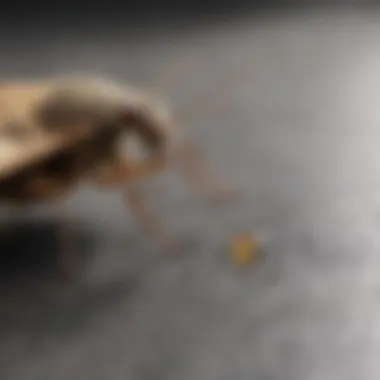
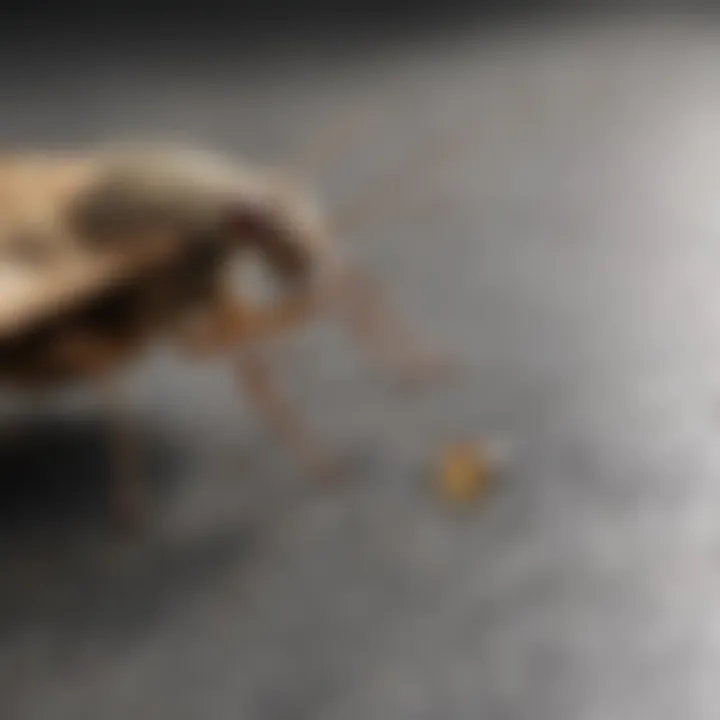
Key Benefits of IPM Strategies:
- Holistic Approach: By combining various methods, IPM fosters a more balanced pest control strategy, considering all potential factors contributing to moth infestations.
- Reduced Chemical Exposure: Since IPM emphasizes the use of non-chemical remedies alongside chemical treatments, this approach lowers the amount of pesticides used, thereby benefitting both the environment and your household health.
- Sustainability: Implementing IPM strategies promotes ongoing vigilance in pest management, which leads to healthier living spaces over time.
"A stitch in time saves nine!" Practicing early detection and combining multiple methods can mitigate severe infestations.
Combining Chemical and Non-Chemical Methods
Incorporating both chemical and non-chemical methods is essential in the fight against clothes moths. Chemical insecticides can be effective for immediate control, but relying solely on them can lead to pesticide resistance among moth populations.
Non-chemical methods should include preventive measures such as thorough cleaning and regularly monitoring your clothing and storage areas. For example, using essential oils like lavender or cedar in storage spaces can act as a natural deterrent. It’s akin to armed forces deploying both air and ground troops for optimal results—each method has its strengths, but together they yield a greater effect.
The Role of Proper Sanitation
Sanitation is the backbone of any successful pest management strategy. Maintaining a clean environment helps eliminate food sources that attract moths. Regular vacuuming of carpets, upholstery, and clothing is crucial. It's important to empty the vacuum bag frequently to avoid any eggs getting a second chance to thrive.
Furthermore, washing infested fabrics in hot water or dry cleaning them can help eradicate eggs and larvae. Think of it as housekeeping with a bodyguard—keeping your home tidy not only looks good, but also acts as a barrier against intruders.
Use of Traps and Deterrents
Utilizing traps and deterrents in an IPM approach adds another layer of protection. Sticky traps can be strategically placed in areas where moths are likely to travel. These traps will not only catch adult moths but also provide insights on infestation levels.
Deterrents such as pheromone traps can be particularly effective. They work by attracting male moths, which disrupts mating cycles, ultimately reducing future generations of pests. To illustrate, it's like setting up a neighborhood watch to keep an eye on potential troublemakers.
The aim is to create multiple barriers against moth invasions. By combining these strategies within an IPM framework, householders can effectively minimize the impact of clothes moths while promoting a safer and cleaner living space.
Long-Term Prevention Measures
Managing clothes moth infestations requires a long-term strategy that goes beyond immediate fixes. Integration of long-term prevention measures not only helps to keep code lurking moths at bay but also ensures that you've set a system in place to prevent future infestations.
Seasonal Monitoring and Maintenance
One of the most effective tactics to tackle moth issues is seasonal monitoring and maintenance. This entails routinely checking your clothing and stored textiles. Depending on the climate where you live, moth activity may fluctuate. During warmer months, for instance, adult moths are more likely to emerge, laying their eggs in the fabrics that could become their larvae's buffet.
Regularly inspect your closets, attics, and storage areas to catch any signs of moth activity early. A keen eye will help you observe any unusual shedding or webbing. Consider setting up a schedule; for example, check once in Spring and once in Fall. A bright flashlight can be your best friend here, illuminating darker areas that often harbor hidden pests.
Clothing Storage Solutions
Proper clothing storage can dramatically reduce the likelihood of a moth invasion. Consider clear plastic bins over cardboard boxes—moths are crafty little devils and can easily munch through cardboard. Storing clothes in airtight containers can be a game changer.
When preparing clothing for storage, ensure everything is clean. Moths are attracted to stains, crumbs, and residual odors from food or body oils.
- Use cedar or lavender sachets when storing clothes. Their scents are natural deterrents.
- Vacuum regularly, especially in storage areas, to eliminate potential eggs and shallow cut larvae.
Identifying Vulnerable Areas in Your Home
Have you ever thought about the hidden nooks in your home where clothes moths might feel right at home? Identifying these vulnerable spots can save you a lot of hassle down the line. Consider areas such as:
- Attics and Basements: Often, these spaces become cluttered with aging boxes and overlooked items. Moths thrive in dusty, undisturbed environments.
- Closets and Drawers: These areas can harbor clothes that are seldom worn. Implement a rotation system; this ensures clothes are moved and aired out regularly.
- Around Baseboards and Corners: Dust builds up in these areas and can become a breeding ground for moths. Regular cleaning can keep them at bay.
It's prudent to keep a close watch on these hotspots and establish effective prevention measures that include regular cleaning and suitable storage tactics. Taking a proactive approach will disrupt the moth's cycle and help you maintain a moth-free environment.
In summary, long-term prevention measures are not just about remembering to check your closet every few months; they're about establishing a lifestyle that recognizes the threat of clothes moths and incorporates preventative practices into your daily routine. By maintaining vigilance, adopting efficient storage solutions, and recognizing the vulnerable areas in your home, you set yourself up for success in the battle against these pesky pests.
Finale
Managing clothes moth infestations is not merely about eradicating the pests; it extends far beyond that. This conclusion serves as a reminder of the essential strategies discussed throughout the article, emphasizing both diligence and proactivity in dealing with these nuisances.
Recap of Key Points
First off, it's crucial to recognize the lifecycle and behavior of clothes moths. Understanding these aspects helps in pinpointing the best treatment approach. Those tiny creatures undergo a transformation through various stages, making them more resilient than many realize. Furthermore, correct identification of the moth species at hand can dictate the methods used in control. Then come the signs of infestation, requiring attention to detail. Spotting physical evidence of moths and assessing potential damage can prevent more extensive destruction in the future.
Insecticides play a significant role, but one should be selective. Not all insecticides are created equal; being aware of common active ingredients and their effectiveness ensures informed decision-making. The section on application techniques highlights the necessity of applying insecticides in a precise manner, targeting the problem areas for the best possible outcomes.
Safety and environmental impact cannot be ignored either. Optimal precautions are key to maintaining a healthy living environment while dealing with moths. We discussed eco-friendly alternatives that allow for pest control without heavy chemical use. The integrated pest management strategies outlined serve to create a holistic framework for long-term control and understanding the role sanitation plays in this ongoing fight.
Lastly, ongoing prevention through seasonal monitoring, proper storage habits, and identifying vulnerable spots secure homes against future infestations.
Emphasizing Ongoing Vigilance
As we wrap up this discussion, it’s imperative to stress the need for continuous vigilance in your homes. Moths are crafty; they can reappear if one isn’t cautious enough. Regular checks on storage areas and implementing preventive measures can significantly reduce the chances of a recurrence.
Having the right mindset is essential—seeing moth management as a long-term commitment, rather than a one-off battle. Keeping an eye on your belongings and maintaining cleanliness will pay dividends in distinguishing your home from those that have become easy targets.
"A stitch in time saves nine." Taking preventive steps can save you from a bigger hassle later.



